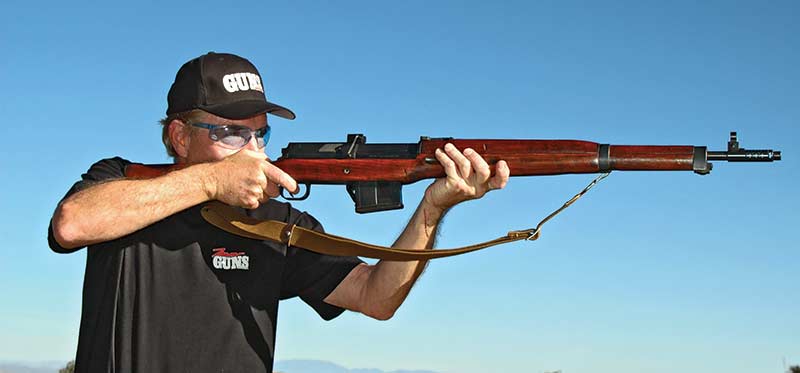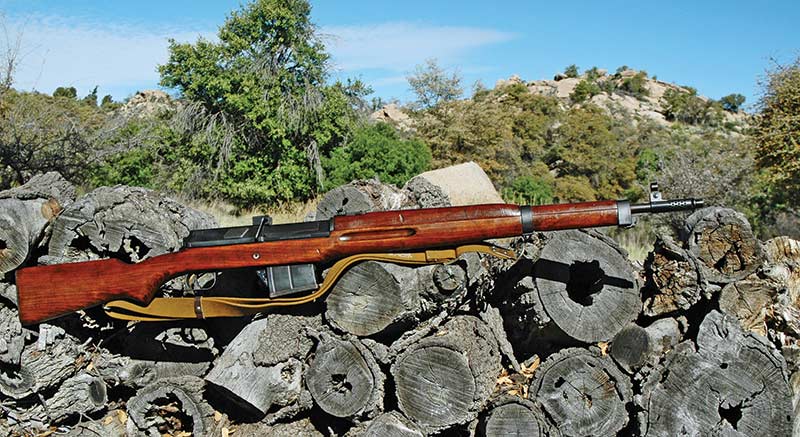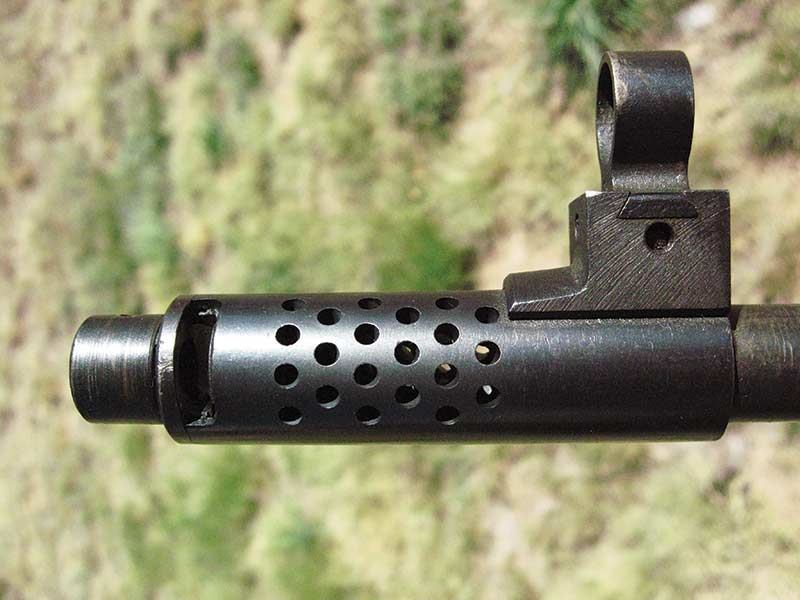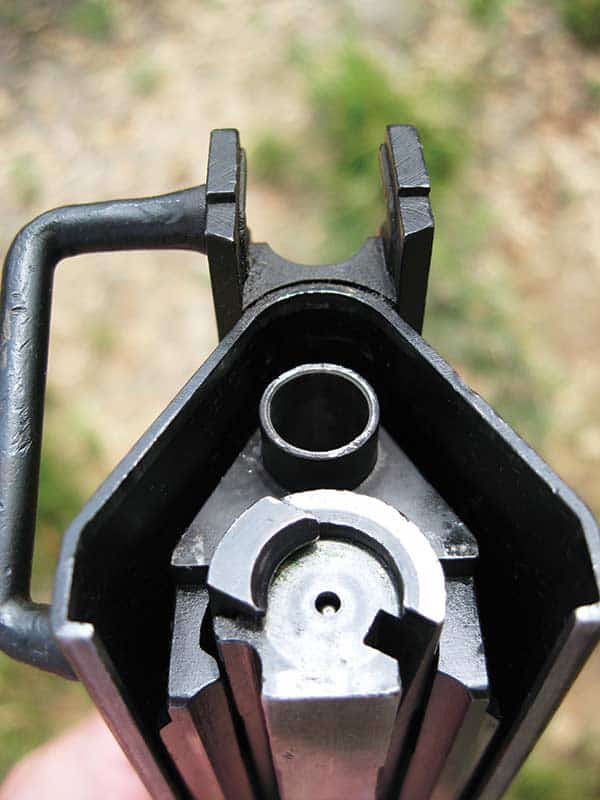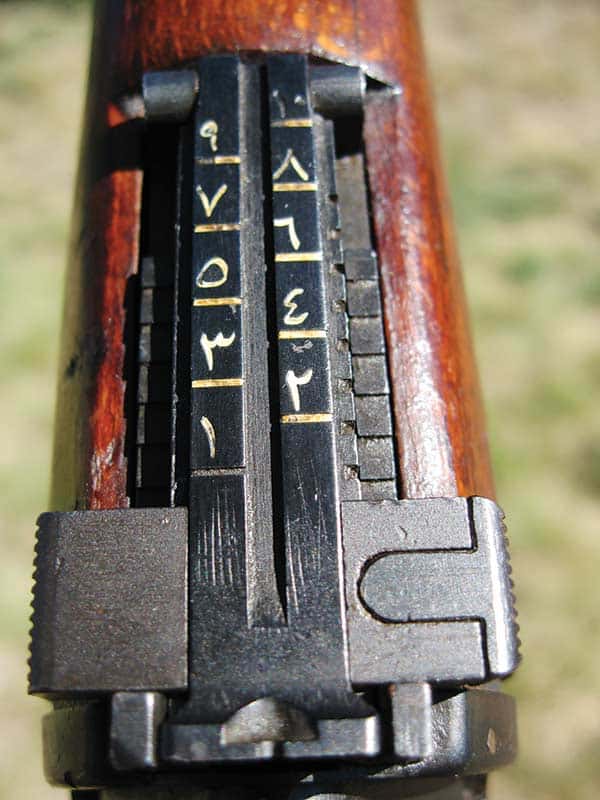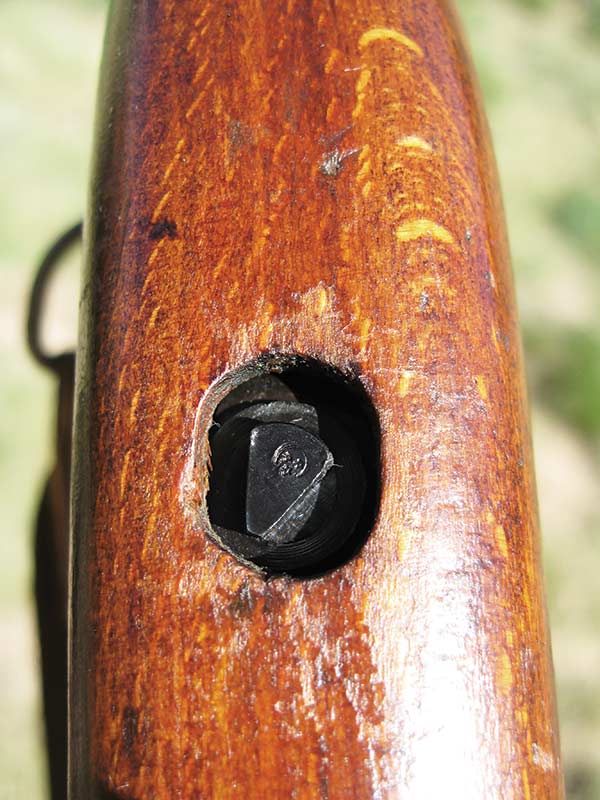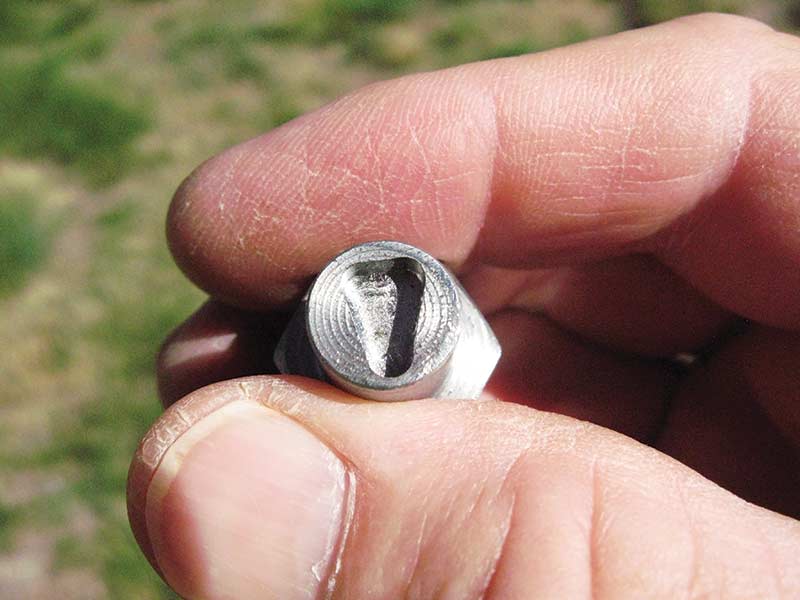The Strange Egyptian Hakim
One Of The World’s Oddest Battle
Rifles Is A Version Of The Swedish Ljungman
In translation, “Hakim” is defined as “ruler, judge or governor,” but in the milsurp world, “Hakim” stands for Egypt’s improved and home-built version of the Swedish Ljungman, which, in my opinion, is the most quirky and yet one of the most inspired rifle designs of the 20th century.
Egypt has a long history of adopting the arms of other nations diplomatically close to them. In the late 19th century and early 20th century, it was the British era with Egypt becoming a British protectorate. The Brits generously supplied the Egyptian army with .303 caliber Martini-Enfields, which, humorously enough, were immediately modified by Egypt’s Citadel Arsenal near Cairo by grinding off the Victorian Crown and cypher of the British rifles and re-stamping them “Citadel.”
Lee-Enfields and a mixture of war surplus Mausers followed, until King Farouk, breaking away from British influence in 1951, ordered 37,000 Belgian-designed FN-49 semi-automatic rifles chambered for 7.92x57mm Mauser cartridge, which was found in abundance in Egypt following the desert warfare of WWII.
Col. Gamal Abdel Nasser engineered a military coup in 1952, deposing Farouk, and immediately embarked on a military modernization program which included an arrangement with Sweden to supply the manufacturing equipment and initial technical assistance to build an Egyptian version of the Ljungman AG-42. It was the beginning of a domestic small-arms industry for Egypt.
The original Ljungman was designed in less than 12 months by Eric Eklund, a gifted engineer and director of the C.J. Ljungman Pump Co. in Malmo, Sweden. Eklund incorporated two important systems in his rifle which kept it simple, inexpensive to manufacture and easy to maintain. The first was the simplest of all gas systems—the direct, pistonless gas-impingement system invented in France in 1900 by Monsieur Rossignol, a weapons inspector at the French Musketry School (ENT) and introduced in the ENT B1 autoloading and machine rifles. In Ecklund’s design, gas is tapped off through a port and carried through a stainless steel gas tube to a blind cup on the face of the bolt carrier.
The second system Eklund incorporated was the use of a carrier-controlled, rear-locking, tilting bolt also invented in France in 1926 and showcased in the MAT 1926 model.
Otherworldly Design
Looking at the Ljungman design, there is nothing intuitive about it. By trial and error, most of us could figure out how to operate a Mauser or a Garand. There’s an obvious bolt handle or an operating handle to manipulate in order to open the action and expose the chamber for loading. Not so with the Ljungman. All you see are two pieces of triangular shaped metal forming the receiver. One piece has what looks like grasping grooves, and your inclination is to pull it rearward to open the action, but it doesn’t budge. Push it forward slightly and you realize it’s under strong spring pressure, but nothing’s happening. Not until you strong-arm it all the way forward over the other exposed metal part, hear a “click” and then pull it rearward with the captured bolt and bolt carrier to expose the magazine and chamber.
It’s a weird rifle. I often think Eric Eklund purposely made its operation so obscure and counter-intuitive, Sweden’s enemy would not be able to work the rifle if they captured one or would lose a finger trying. From an Egyptian point-of-view, not only was the rifle easy to make and maintain, but the bolt carrier and the carrier cover formed an enclosed action dirt-, sand- and water-proof. I think of the Hakim as a refined Ljungman. The Egyptians made several improvements to Eland’s original design.
Left over in the Middle East from the campaigns of WWII, there were obviously a variety of makes and types of 7.92x57mm ammunition available generating a wide spectrum of gas pressures when fired. To compensate for various levels of pressure and to minimize wear on the action, the Egyptians added a gas control valve in the direct impingement gas tube. It’s triangular in shape and adjusted with a matching wrench.
When the point of the triangle is pointing to the 9 o’clock position, the valve is shut, and a fired case will not eject. Turning the valve counterclockwise slowly toward 6 o’clock, a sweet spot will be found where spent cases will consistently be ejected by the gas being delivered to the bolt carrier. At this point, the valve is properly adjusted. If the valve is stuck or corroded, it’s usually a simple matter to soak it in a penetrating oil, remove it and clean it.
The original muzzlebrake of the Ljungman consisted of a series of small ports drilled into the barrel just aft of the front sight. The Egyptians developed an enlarged, integral, ported-and-slotted muzzlebrake that, on a rifle weighing almost 11 pounds, reduces felt recoil dramatically. It also generates a distinct puff of warm air that drifts across your scalp keeping you toasty on a cold day. Yup, it’s also loud. Subjectively, I would place recoil from a Hakim in the .243 Win class.
The sights of the original Swedish Ljungman were fancy indeed. The rear open sight was adjusted by rotating an elevation drum calibrated for both the 156-grain roundnose and the 139-grain spitzer 6.5x55mm rounds. Yet, in use, I found the Swedish sight picture to be extremely coarse. The Egyptians on the other hand substituted a simple, sliding tangent rear sight calibrated from 100 to 1,000 meters. Their tangent sight coupled with a windage adjustable front sight offers a crisp, sharp sight picture easy to acquire and fast to use.
The Hakim uses a “semi-detachable” 10-shot magazine. It’s detachable, but it’s meant to be left in place and charged via 5-round stripper clips. The two-stage trigger of the Hakim is crisp indeed, measuring 5.5 pounds overall on a Lyman gauge.
Accuracy? My military 7.92×57 test ammunition is 1971 vintage FNM (Fabrica Nacional de Municoes de Armas, Portugal) 198-grain ball with a velocity of 2,365 fps. At 100 yards the Hakim and I can keep 4-out-of-5 FNM rounds within 2.25 inches.
Used briefly in the Arab/Israeli conflicts, the Hakim was replaced by Egyptian-made AKM’s. A rarely seen design offshoot of the Hakim is the Rashid carbine chambered for the Soviet 7.62x39mm round.
Imported years ago from Egypt by Century International Arms, Hakims are fairly common, in good condition and much less expensive than the Swedish AG-42 Ljungmans. Beautifully machined and fitted with clean lines and simple architecture, the Hakim is a very classy, fun-to-shoot milsurp. Don’t pass one by!
Operating The Hakim
Now comes the fun part—the operation of a Hakim. There are two scenarios, one with the rifle unloaded and one with the rifle loaded. File these directions away and follow them exactly. The bolt of the Hakim is under great spring tension and can make a “Garand Thumb” feel like a baby’s kiss.
UNLOADED: With the safety lever at the back of the receiver switched to the right (ON), push the bolt carrier cover fully forward until it “clicks.” Then, pull the bolt carrier cover with the captured bolt carrier and bolt fully to the rear. This permits you to inspect the chamber and magazine. Call this Position 1.
Next, depress the magazine follower and slide the bolt assembly fully forward. While firmly holding the bolt carrier cover, depress the little lever at the rear of the bolt carrier cover and let the bolt carrier cover slide back under its spring tension. Switch the safety to the left (OFF) and drop the hammer by pulling the trigger.
LOADED: Return to Position 1 with the safety ON. Load the magazine. Switch the safety lever to the left (OFF). Pull back on the bolt carrier cover and the bolt carrier and bolt will slam forward, picking up and chambering a round. Return the safety to ON until you’re ready to fire.
UNLOADING: Switch the safety to ON and pull back the bolt carrier cover with attached bolt assembly repeatedly until all the remaining rounds have been ejected. Then follow Position 1 directions for safely closing the action and dropping the hammer.
HAKIM
MAKER: Egypt
ACTION TYPE: Direct impingement, tilting bolt, semi-automatic
CALIBER: 7.92×57 (8mm Mauser)
CAPACITY: 10
BARREL LENGTH: 25 inches
OVERALL LENGTH: 47.75 inches
WEIGHT: 10 pounds, 15 ounces
FINISH: Blue
SIGHTS: Tangent rear, windage adjustable front blade
STOCK: Wood
VALUE: Internet auctions: $600 to $800
